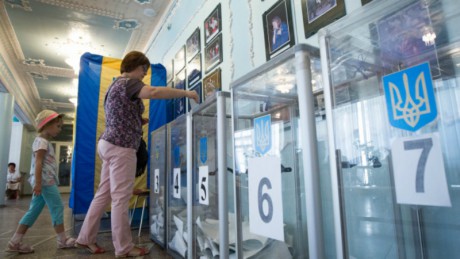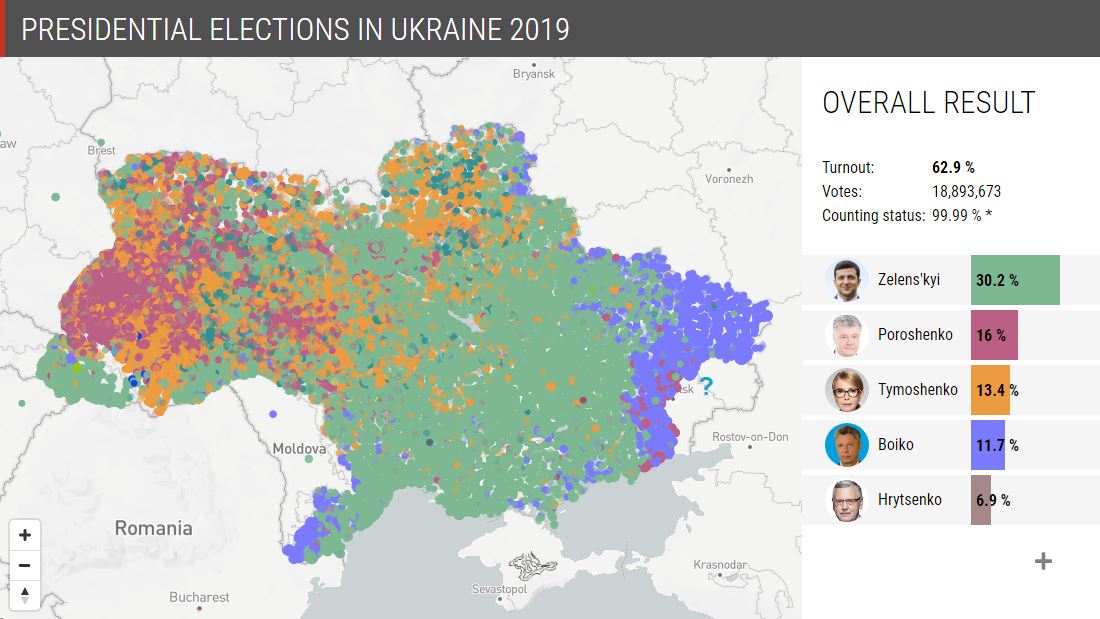A record amount of over 2.3 bn UAH ($85 mn) has been allocated from the state budget for financing the 2019 election of the President of Ukraine.
This is 20% more than in 2014, the presidential election which took place immediately after the Euromaidan Revolution, and almost two and half times more than the cost of the last parliamentary election in 2014.
Election funds
This year, a record number of candidates announced their presidential ambitions. The Central election commission (CEC) registered 44 candidates. As of 18 March, six of them had withdrawn from the race.
According to the Ukrainian election law, each of the candidates is required to make a UAH 2.5mn ($92,000) pledge, which will be returned only to those who make it to the second round.
Officially, the candidates’ election campaign is financed from special election funds, data on which the candidates should open up to the National Agency of Corruption Prevention (NAZK). However, according to the CEC
, three candidates still did not reveal their data. And those who did cannot always explain where they got the money and why their campaign is much more expensive than the official data says.
The law does not limit the amount of money in the elections fund of a candidate. Usually, candidates use it to pay for advertising on TV.
However, analysts of the electoral watchdog Chesno say that TV advertising started long before the official election period did - and the origin of the money used is under question.
Expensive TV

Prices for political ads on Ukrainian TV channels are open information.
At the start of the election campaign, TV Channel Ukrayina had the most expensive ads. During prime time, they cost UAH 5,658 ($200) per second.
TV Channel 1+1, which is close to Ihor Kolomoiskyi, will take 1050 UAH ($39) for each second of political ad broadcast from 20:00 to 23:00.
On the Novyi Kanal, one second of advertising in the same time period will cost 872 UAH ($32) on Sunday and 496 UAH ($18) during the week.
After monitoring TV channels, Chesno analysts estimated the money which candidates spent on advertising in 2018. In total, all the candidates spent UAH 568mn ($20.9 mn) in 2018.
Incumbent President Poroshenko
spent the most - UAH 175mn ($6.5 mn). This is 31% of the overall total. The Presidential Administration reported last year that Poroshenko himself paid for broadcasting the ads himself and will report about these expenses in his next annual declaration.
Yuliya Tymoshenko is in second place: her TV advertisement cost UAH 126.8mn ($4.7mn) Her Batkivshchyna party reported a similar amount; they claimed to have spent UAH 120mn ($4.4mn) on TV advertising during 2018.
Candidate Oleksandr Shevchenko is in third place; he spent about UAH 86.4mn ($3.2mn) on TV ads during last year.
Multi-millionaire and leader of the Osnova political party Serhiy Taruta spent UAH 64.4 mn ($2.4mn) on TV ads and Oleh Liashko, leader of Radical party spend UAH 46.7mn ($1.7mn).
But apart from political ads on TV, candidates also use hidden political advertising termed as “jeansa” in the Ukrainian media. The “95 Kvartal” humor show starring presidential candidate Zelenskyy, which continues to be aired and will be broadcast even on election day, is one example. The three-part documentary ooh-ing over Petro Poroshenko’s projects on TV channel Ukrayina is another.
As well, black PR in social media, especially in Facebook, constitutes another hidden cost of the campaigns. Popular Facebook groups were created to smear candidates, says the Сommittee of voters of Ukraine. They also warn not to trust every poll you see, as some of them were probably commissioned.
Billboards

Political advertising on the streets of Ukrainians cities appeared long before the candidates even announced their political ambitions. Petro Poroshenko littered the whole country with billboards celebrating the independence of the Ukrainian Orthodox Church, which is at the heart of his election campaign slogan "Army! Language! Faith!" Meanwhile, billboards advertising the comedy series “President is the Servant of the People” featuring actor, and now presidential candidate Zelenskyy were also seen by many as hidden political advertising.

Read also:
- Oligarchic shadow of Ukraine’s 2019 elections
- Three weeks before Ukrainian elections: Zelenskyy leads polls while Tymoshenko and Poroshenko fight each other
- Fifty shades of Ukrainian populism: Tymoshenko, Zelenskyy, and the Chiaroscuro principle
- Showbiz vs Reality: comedian runs for Ukrainian presidency, and he’s in the top three
- Ukrainians prefer comedian to current president and other insights from pre-election polls
- Is Tymoshenko a pro-Russian candidate? The facts, the fiction, and the mysteries
- Where are all of Ukraine’s new alternative political forces?
- Two Ukrainian TV channels push Russian propaganda amid presidential election: report
- Three reasons why a comedian should not be president of Ukraine





